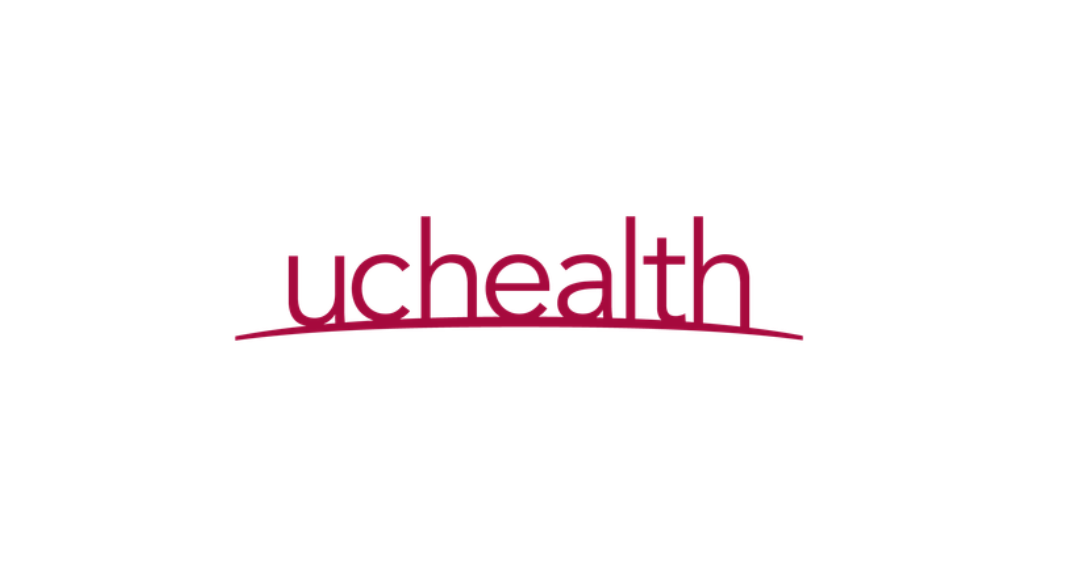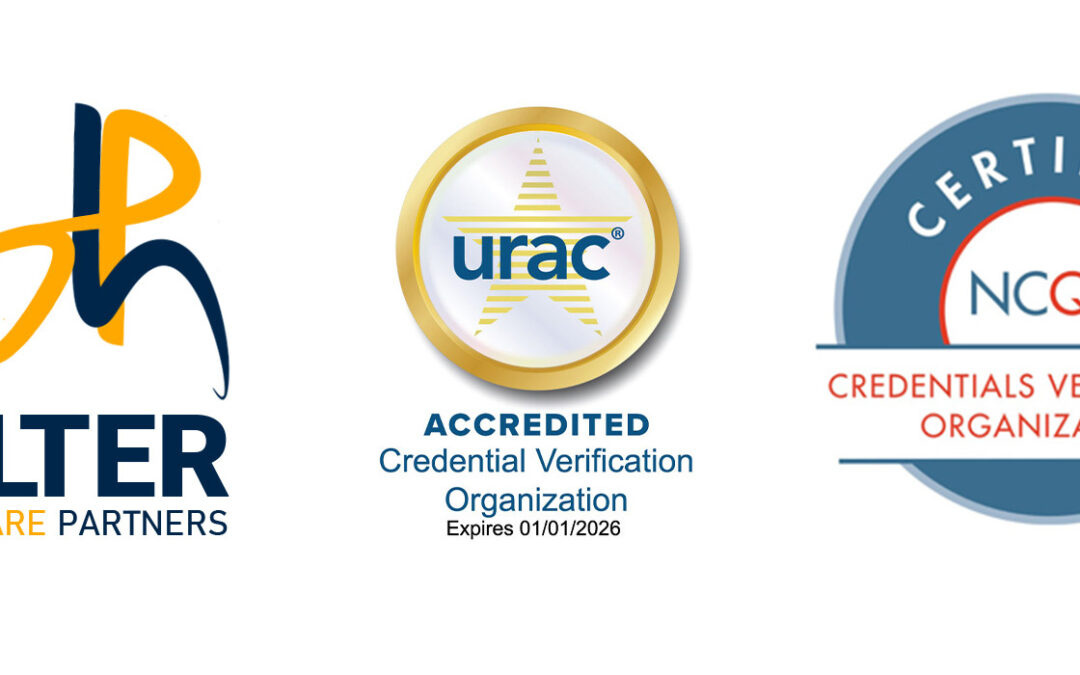
Dec 13, 2024 | Uncategorized
Navigating the prior authorization process can often feel like a hurdle, delaying essential care and adding to administrative workloads. However, the Gold Card program presents a new approach to streamline these processes, benefiting both physicians and patients alike.
What Is the Gold Card Program?
Several major insurance providers, including UnitedHealthcare and Highmark, have introduced the Gold Card program—an initiative aimed at simplifying the prior authorization process for top-performing physicians. This program rewards providers with a proven track record of high approval rates by reducing the need for extensive documentation and approval steps.
How Does It Work?
Physicians who meet specific eligibility criteria—such as consistently high prior authorization approval rates—may qualify for a Gold Card. Once enrolled, these physicians can bypass the traditional prior authorization process for certain services. Instead of submitting a detailed prior authorization request, they only need to provide an “advance notification.” This notification confirms eligibility and network status, eliminating the need to submit clinical documentation.
Key Benefits of the Gold Card Program
- Reduced Administrative Burden: Less paperwork translates to more time for patient care and other critical responsibilities.
- Faster Patient Care: Streamlined processes enable timely access to treatments and prescriptions.
- Improved Practice Efficiency: Simplifying administrative tasks enhances overall workflow and productivity.
Important Considerations
While the Gold Card program offers significant benefits, it’s important to remember that the specifics can vary. Eligibility criteria, as well as the services covered under the program, depend on the insurance provider and state regulations. To understand how this program may apply to your practice, consider reaching out directly to your insurance provider for detailed information.
Staying Informed in a Changing Landscape
As the healthcare industry evolves, initiatives like the Gold Card program exemplify efforts to reduce administrative friction and improve care delivery. By staying informed about these developments, healthcare providers can better position themselves to adapt and thrive in a dynamic environment.
Welter Healthcare Partners remains committed to providing up-to-date insights and resources to help healthcare professionals navigate these changes. We’re here to support your success in delivering quality care with fewer obstacles.

Dec 6, 2024 | Uncategorized
Recently, Anthem Blue Cross Blue Shield faced significant backlash after proposing a policy that would deny coverage for anesthesia costs beyond an arbitrary time limit for surgical procedures. This unprecedented move by Anthem’s plans in Connecticut, New York, and Missouri drew sharp criticism from patients and medical professionals. Under this policy, Anthem planned to deny payment for anesthesia services if the care exceeded pre-determined time limits, disregarding the unpredictable nature of surgeries. Fortunately, following public outrage and expert pushback, Anthem reversed this decision.
Anesthesia care is not just about keeping patients unconscious during surgery; it is a highly specialized service that requires anesthesiologists to tailor their approach to each patient’s unique health conditions. Surgeries often extend beyond anticipated times due to complications, patient-specific needs, or procedural complexities. Denying payment for such essential care would not only jeopardize patient safety but also undermine surgeons’ ability to deliver effective and timely interventions.
Anthem’s policy highlights a disturbing trend: prioritizing profit margins over patient welfare. As reported, Anthem’s parent company, Elevance Health, boasted a substantial increase in year-over-year net income, reinforcing suspicions that this policy aimed to reduce payouts at patients’ and providers’ expense. Moves like this break down the trust between insurers, physicians, and patients, creating unnecessary stress for healthcare professionals who are committed to providing high-quality, comprehensive care.This case serves as a reminder of the importance of vigilance in protecting patient care from cost-cutting policies.
At Welter Healthcare Partners, we understand the complexities of navigating healthcare policies and ensuring fair reimbursement for services rendered. From coding and provider enrollment to credentialing and audits, we are here to help medical professionals focus on patient care without undue administrative burdens. If you have questions or need support managing your practice, contact us today—because your success is our priority.
Image Source: https://apnews.com/article/anthem-blue-cross-anesthesia-insurance-coverage-c8233db68f76342c4e794320f151a926

Nov 26, 2024 | Uncategorized
UCHealth, Colorado’s largest medical provider, has agreed to pay $23 million to settle allegations of overbilling Medicare and TRICARE for emergency care services. The accusations, which the health system denies, stem from claims that UCHealth improperly used the highest billing code for emergency department visits between November 2017 and March 2021. Federal prosecutors allege the practice violated the False Claims Act by not accurately reflecting the severity of patients’ conditions or the resources used to treat them.
At the center of the controversy are Current Procedural Terminology (CPT) codes used to bill evaluation and management (E&M) services in emergency departments. Federal authorities claim UCHealth automatically applied the highest-level code, CPT 99285, for certain cases where patients had their vital signs checked more often than their time in the ER justified. This practice, known as “upcoding,” has raised broader concerns about its role in escalating healthcare costs. While UCHealth denies the allegations, it opted for a settlement to avoid prolonged litigation and focus on patient care, according to spokesperson Dan Weaver.
The Growing Impact of “Upcoding”
The practice of upcoding, or assigning higher billing codes than appropriate, is a significant driver of rising healthcare costs in the U.S. Studies show that the use of CPT 99285 has surged over the past decade, becoming the most commonly billed E&M code in Colorado. This shift translates to substantial cost differences: Medicare reimburses $621.39 for a level-5 emergency visit compared to $85.89 for a level-1 visit. Private insurers pay even more, with rates exceeding $6,000 for the most severe cases. Critics argue that upcoding not only burdens government programs but also inflates healthcare expenses for patients and insurers.
The UCHealth allegations came to light through a whistleblower complaint by Timothy Sanders, a former revenue recovery auditor for the system. Sanders claimed he discovered the automated upcoding system and that UCHealth failed to address the issue unless patients contested their bills. As a whistleblower, Sanders is entitled to a portion of the settlement and will receive $3.91 million.
Maintaining Compliance in a Complex Billing Landscape
UCHealth’s case highlights the complexities of hospital billing and the potential for errors or mismanagement. With more than a dozen hospitals and millions of patients treated annually, ensuring accurate billing is a challenging but critical responsibility for health systems. This settlement serves as a reminder of the importance of adhering to ethical and transparent billing practices to maintain trust and compliance.
Partnering with Welter Healthcare Partners for Solutions
To help healthcare organizations navigate coding and billing challenges, Welter Healthcare Partners recommends a proactive approach:
- Conduct an Internal Audit: Regularly review E&M code submissions to identify discrepancies and correct errors.
- Provide Education and Training: Strengthen coding team expertise through targeted training that reinforces documentation requirements for each E&M level.
- Collaborate on Adjustments: Work with Welter Healthcare Partners to correct claims and apply for reprocessing to ensure compliance with payer requirements.
Welter Healthcare Partners specializes in supporting healthcare organizations with accurate coding and billing practices and compliance. Contact us to learn how we can help your team implement these corrections and maintain the integrity of your revenue cycle.
More information regarding UCHealth’s overbilling allegations can be found here.
Sep 3, 2024 | Uncategorized
President Biden plans to address the mental health and addiction crisis, both of which have worsened since the start of the pandemic. He intends to allocate funding between substance abuse and mental health services. Continue reading below to learn more.
President Biden is directing $2.5 billion in funding to address the nation’s worsening mental illness and addiction crisis, according to an official from the U.S. Department of Health and Human Services, as reported by Axios.
Why it matters:
Confronting the mounting mental health and substance abuse crisis will be imperative for the Biden administration, even as its primary focus remains on combating the broader COVID-19 pandemic. The funding announced today aims to increase access to services for individual Americans.
The funding surge comes as the president has yet to fill several key permanent positions in agencies that would lead the charge in combating the drug epidemic, including the Food and Drug Administration and the White House Office of National Drug Control Policy. His pick to lead HHS, Xavier Becerra, is expected to be confirmed by a close vote.
Between the lines:
The funds will be divided into two components by the Substance Abuse and Mental Health Services Administration.
- $1.65 billion will go toward the Substance Abuse Prevention and Treatment Block Grant, providing states and territories with money to improve existing treatment infrastructure and create or enhance prevention and treatment programs.
- $825 million will be allocated through the Community Mental Health Services Block Grant program, which states will use to specifically address mental health treatment services.
By the numbers:
A survey conducted last year and published in August 2020 by the Centers for Disease Control and Prevention showed that 41% of U.S. adults reported struggling with mental health or substance abuse related to the pandemic or its solutions, like social distancing.
Before the pandemic, over 118,000 people died by suicide and overdose in 2019. An HHS official says the administration expects that number to increase because of the COVID-19 pandemic. Preliminary data from the CDC indicates that the number of drug overdoses through July 2020 increased by 24% from the previous year.
Flashback:
On the campaign trail, then-candidate Biden often spoke about the need to address the mounting mental health and substance abuse crisis in America, an issue that hits close to home. His son, Hunter, has openly discussed his own struggles with addiction.
The National Suicide Prevention Lifeline (1-800-273-8255) provides 24/7, free, and confidential support for anyone in distress, in addition to prevention and crisis resources. It is also available for online chat.
Original article posted on axios.com
Aug 27, 2024 | Uncategorized
Defining Interactive Complexity +90785:
Interactive Complexity (+90785) is an add-on code used for office visits with a psychologist or other mental health professional that are complicated by factors such as language, behavior, emotions, mandated reporting requirements, or trauma. This code is used in addition to one of the following primary service codes: 90791-90792, 90832-90834, 90836-90838, 90853. (Add-on codes may only be reported in conjunction with other codes, never alone.)
Guidelines for Appropriate Use and Documentation:
Interactive Complexity is applicable when specific communication difficulties are present with patients who typically:
- Have other individuals legally responsible for their care, such as minors or adults with guardians.
- Request others to be involved in their care during the visit, such as adults accompanied by family members, an interpreter, or a language translator.
- Require the involvement of other third parties, such as child welfare agencies, parole or probation officers, or schools.
Interactive Complexity may be reported with psychiatric procedures when at least one of the following communication difficulties is present:
- The need to manage maladaptive communication (e.g., high anxiety, high reactivity, repeated questions, or disagreement) among participants that complicates delivery of care.
- Caregiver emotions/behavior that interfere with the implementation of the treatment plan.
- Evidence/disclosure of a sentinel event and mandated report to a third party (e.g., abuse or neglect with report to a state agency) with initiation of discussion of the event and/or report with the patient and other visit participants.
- Use of play equipment, physical devices, interpreter, or translator to overcome significant language barriers.
Documentation should clearly indicate the type of interactive methods used, such as an interpreter, play, or physical device, and that the patient could not communicate through normal verbal means.
Coverage also includes interactive examinations of patients with primary psychiatric diagnoses (excluding dementias and sleep disorders) and one of the following conditions: developmental speech or language disorders, conductive hearing loss (total), mixed conductive and sensorineural hearing loss (total), deaf mutism, aphasia, voice disturbance, aphonia, and other speech disturbances such as dysarthria or dysphasia. These conditions must be clearly and concisely recorded in the medical record. Other catatonic states may be covered if documentation is submitted with the claim.
When NOT to use Interactive Complexity:
Do not report the +90785 add-on code for Interactive Complexity in conjunction with Psychotherapy for crisis codes or with E/M services when no psychotherapy service is also reported. The +90785 code cannot be used in conjunction with:
- Psychotherapy for crisis codes (90839-90840)
- Family psychotherapy codes (90846, 90847, 90849)
- E/M (evaluation and management) service where no psychotherapy service is reported
Interactive Complexity should not be billed solely for translation or interpretation services. According to the Centers for Medicare and Medicaid Services (CMS), federal laws prohibit discrimination, which in this case would take the form of higher beneficiary payments and copayments for the same service, based on disability or ethnicity. Discernment is advised when billing for translation or interpretation services.
Aug 15, 2024 | Uncategorized
Medicare physician payment cuts are set to take effect on January 1, 2023. Continue reading to learn why many physicians are reaching out to their legislators to prevent these cuts. As members of Congress head home for their August recess, the AMA is urging physicians to contact their legislators with a two-fold message: stop the Medicare physician payment cuts scheduled for January 1, 2023, and reform the Medicare payment systems to prevent the need for such appeals every year.
“The overall goals of Medicare payment-system reform are simplicity, relevance, alignment, and predictability, both for physicians and the Centers for Medicare & Medicaid Services (CMS),” said Cynthia Brown, the AMA’s vice president of government affairs. “The problems we’re seeing arise from a system so complicated that even the Medicare agency struggles to implement it correctly.”
Leading the charge to reform Medicare pay is a key component of the AMA Recovery Plan for America’s Physicians. “You took care of the nation. It’s time for the nation to take care of you. It’s time to rebuild. And the AMA is ready.” The AMA has challenged Congress to enact systemic reforms to make Medicare work better for both physicians and patients. The AMA will continue to fight tirelessly against future cuts and all barriers to patient care.
Brown spoke during “Medicare Payment Principles—A Vision for Reform,” part of the “AMA Advocacy Insights Webinar Series.” The webinar detailed the cuts scheduled for January 1 and outlined the “Characteristics of a Rational Medicare Payment System” (PDF), developed by an AMA-led coalition of 120 state medical and national specialty societies. Physicians were encouraged to contact their legislators and were given tips and resources to guide their conversations.
History Repeats
Last year, physicians faced Medicare payment cuts totaling 9.75%, scheduled to take effect on January 1. “These cuts would’ve been untenable during normal circumstances but were beyond reckless during the public health emergency we continue to face,” said Sandra Adamson Fryhofer, MD, chair of the AMA Board of Trustees. “Additional work is necessary for permanent payment reform.” Congress passed legislation averting these cuts in December, a Christmastime ritual no one wants to maintain.
“We don’t want to be here asking for money every year at the end of the year—and members of Congress don’t like it,” Jason Marino, the AMA’s director of congressional affairs, said in the webinar. “We want a bridge to a permanent solution—so we have a normal, functioning system like the hospitals, nursing homes, and home health agencies. They don’t have to come to Congress every year.”
Physicians are now facing a “portfolio of cuts” totaling 4.5%, Marino noted. But that’s just the beginning. Coupled with 9% inflation, physicians’ Medicare payment update for 2023 is 0%. Additionally, a 5% bonus for successfully participating in an alternative payment model is expiring, and a $500 million bonus pool for Merit-based Incentive Payment System high performers is “going away,” he added. While payment rates for hospitals, nursing homes, and similar facilities are adjusted for inflation, rates for physicians are not, as shown in the AMA-developed chart below.
“That chart tells the story, and we have senators now talking about this chart—that’s how you know it’s resonating,” Marino said. “Everyone who sees that chart realizes that’s not a sustainable path.” However, there is skepticism among members of Congress that Medicare’s physician payment rates are causing patient-access problems. Physicians must tell their senators and representatives how Medicare pay uncertainties hinder giving raises to staff, buying new equipment, and investing in their practices—and how this impedes patient access.
“You want to create some empathy,” he advised. “You have to start with making a connection with your own story, what this means to you as a physician, what it means for your patients’ access, and humanize it in a way that only you can.”
Original article published on ama-assn.org
Aug 13, 2024 | Uncategorized
Anthem is changing its name to better reflect its purpose in the healthcare business. The new name, Elevance Health, represents the insurance company’s evolution into a lifetime trusted health partner for the millions of people they serve. Continue reading to learn about this change. Anthem announced today that the name change to Elevance Health aims to emphasize its commitment to “elevating whole health.”
This rebrand, which serves 118 million people through its affiliated companies, will be subject to shareholder approval but will not affect the Anthem Blue Cross Blue Shield health plans’ name. “Improving health means more than just treating what ails us. We must address whole health and the physical, behavioral, and social drivers that impact it,” said Anthem president and CEO Gail Boudreaux. “This need has driven our transformation from a health benefits organization to a lifetime, trusted health partner. Our commitment to always expect more from ourselves has led us to reimagine the way we operate and take a more holistic approach to health.
As Elevance Health, we will continue to work toward a healthcare system that better serves the needs of our consumers, care providers, communities, partners, and associates,” Boudreaux said. Anthem’s portfolio has expanded over the years to offer more than just health insurance. Between pharmacy, behavioral, clinical, and complex care assets, along with its digital capabilities, the payer offers consumers a wide range of services. With the name change, Anthem believes Elevance Health better encompasses its mission as they seek continued growth. “Elevance Health represents who we are today,” said Boudreaux. “Powered by industry-leading capabilities and a digital platform for health, Elevance Health’s companies will serve people across the entire care journey, connecting them to the care, support, and resources they need to lead healthy lives.
By simplifying every step and making health more equitable and accessible, Elevance Health will remain committed to helping everyone reach their full potential.” While insurers have faced challenges during the COVID-19 pandemic, Anthem experienced an EBITDA increase of 8.7% for 2021—outpacing several other larger payers.
Original article published on healthleadersmedia.com

Jul 30, 2024 | Uncategorized
Anthem and UnitedHealthcare are among the major insurers lagging billions of dollars in payments to hospitals and doctors. New reimbursement rules, computer problems, and mishandled claims have led to these delays. Continue reading below to learn more!
Anthem Blue Cross, the country’s second-largest health insurance company, is behind on billions of dollars in payments owed to hospitals and doctors due to onerous new reimbursement rules, computer issues, and mishandled claims, according to hospital officials in multiple states. Anthem, like other big insurers, is using the COVID-19 crisis as cover to institute “egregious” policies that harm patients and strain hospital finances, said Molly Smith, group vice president at the American Hospital Association. “There’s this sense of, ‘Everyone’s distracted. We can get this through,’” she said.
Hospitals are also facing a spike in retroactive claims denials by UnitedHealthcare, the largest health insurer, for emergency department care, the AHA reports. Disputes between insurers and hospitals are nothing new, but this situation puts more patients in the middle, worried they’ll have to pay unresolved claims. Hospitals say this is hurting their finances as they cope with COVID-19 surges, even after receiving tens of billions of dollars in federal emergency assistance.
“We recognize there have been some challenges” to prompt payments caused by claims-processing changes and “a new set of dynamics” amid the pandemic, Anthem spokesperson Colin Manning said in an email. “We apologize for any delays or inconvenience this may have caused.”
Virginia law requires insurers to pay claims within 40 days. In a Sept. 24 letter to state insurance regulators, VCU Health, which operates a large teaching hospital in Richmond associated with Virginia Commonwealth University, said Anthem owes it $385 million. More than 40% of the claims are over 90 days old, VCU said. For all Virginia hospitals, Anthem’s late, unpaid claims amount to “hundreds of millions of dollars,” the Virginia Hospital and Healthcare Association said in a June 23 letter to state regulators. Nationwide, the payment delays “are creating an untenable situation,” the American Hospital Association said in a Sept. 9 letter to Anthem CEO Gail Boudreaux. “Patients are facing greater hurdles to accessing care; clinicians are burning out on unnecessary administrative tasks, and the system is straining to finance the personnel and supplies” needed to fight COVID-19.
Complaints about Anthem extend “from sea to shining sea, from New Hampshire to California,” AHA CEO Rick Pollack told KHN. Substantial payment delays can be seen on Anthem’s books. On June 30, 2019, before the pandemic, 43% of the insurer’s medical bills for that quarter were unpaid, according to regulatory filings. Two years later, that figure had risen to 53% – a difference of $2.5 billion. Anthem profits were $4.6 billion in 2020 and $3.5 billion in the first half of 2021.
‘It’s a game they’re playing’
Alexis Thurber, who lives near Seattle, was insured by Anthem when she received an $18,192 hospital bill in May for radiation therapy that doctors said was essential to treat her breast cancer. Anthem deemed the treatments “experimental” and “not medically necessary,” according to Thurber. She spent much of the summer trying to get the insurer to pay up – making two dozen phone calls, spending hours on hold, sending multiple emails, and enduring immense stress and worry. It finally covered the claim months later. “It’s so egregious. It’s a game they’re playing,” said Thurber, 51, whose cancer was diagnosed in November. “Trying to get true help was impossible.” Privacy rules prevent Anthem from commenting on Thurber’s case, said Anthem spokesperson Colin Manning.
When insurers fail to promptly pay medical bills, patients are left in a bind. They might first get a notice saying payment is pending or denied. A hospital might bill them for treatment they thought would be covered. Hospitals and doctors often sue patients whose insurance didn’t pay. Hospitals point to various Anthem practices contributing to payment delays or denials, including new layers of document requirements, prior-authorization hurdles for routine procedures, and requirements that doctors themselves – not support staffers – speak to insurance gatekeepers. “This requires providers to literally leave the patient’s bedside to get on the phone with Anthem,” AHA said in its letter. Anthem often hinders coverage for outpatient surgery, specialty pharmacy, and other services in health systems listed as in-network, amounting to a “bait and switch” on Anthem members, AHA officials said. “Demanding that patients be treated outside of the hospital setting, against the advice of the patient’s in-network treating physician, appears to be motivated by a desire to drive up Empire’s profits,” the Greater New York Hospital Association wrote in an April letter to Empire Blue Cross, which is owned by Anthem.
Anthem officials pushed back in a recent letter to the AHA, saying the insurer’s changing rules are partly intended to control excessive prices charged by hospitals for specialty drugs and non-emergency surgery, screening, and diagnostic procedures. Severe problems with Anthem’s new claims management system surfaced months ago and “persist without meaningful improvement,” AHA said in its letter. Claims have gotten lost in Anthem’s computers, and in some cases, VCU Health has had to print medical records and mail them to get paid, VCU said in its letter. The cash slowdown imposes “an unmanageable disruption that threatens to undermine our financial footing,” VCU said.
An ‘incredibly aggravating’ response
United denied $31,557 in claims for Emily Long’s care after she was struck in June by a motorcycle in New York City. She needed surgery to repair a fractured cheekbone. United said there was a lack of documentation for “medical necessity” – an “incredibly aggravating” response on top of the distress of the accident, Long said. The Brooklyn hospital that treated Long was “paid appropriately under her plan and within the required time frame,” said United spokesperson Maria Gordon Shydlo. “The facility has the right to appeal the decision.” United’s unpaid claims stood at 54% as of June 30, about the same level as two years previously.
When Erin Conlisk initially had trouble gaining approval for a piece of medical equipment for her elderly father this summer, United employees told her the insurer’s entire prior-authorization database had gone down for weeks, said Conlisk, who lives in California. “There was a brief issue with our prior authorization process in mid-July, which was resolved quickly,” Gordon Shydlo said.
When asked by Wall Street analysts about the payment backups, Anthem executives said it partly reflects their decision to increase financial reserves amid the health crisis. “Really a ton of uncertainty associated with this environment,” John Gallina, the company’s chief financial officer, said on a conference call in July. “We’ve tried to be extremely prudent and conservative in our approach.”
‘A deep fear of talking on the record’
During the pandemic, hospitals have benefited from two extraordinary cash infusions. They and other medical providers have received more than $100 billion through the CARES Act of 2020 and the American Rescue Plan of 2021. Last year United, Anthem, and other insurers accelerated billions in hospital reimbursements. The federal payments enriched many of the biggest, wealthiest systems while poorer hospitals serving low-income patients and rural areas struggled. Those are the systems most hurt now by insurer payment delays, hospital officials said. Federal relief funds “have been a lifeline, but they don’t make people whole in terms of the losses from increased expenses and lost revenue as a result of the COVID experience,” Pollack said.
Several health systems declined to comment about claims-payment delays or didn’t respond to a reporter’s queries. Among individual hospitals, “there is a deep fear of talking on the record about your largest business partner,” AHA’s Smith said.
Alexis Thurber worried she might have to pay her $18,192 radiation bill herself, and she’s not confident her Anthem policy will do a better job next time of covering the cost of her care. “It makes me not want to go to the doctor anymore,” she said. “I’m scared to get another mammogram because you can’t rely on it.”
Original article published on usatoday.com

Jul 29, 2024 | Uncategorized
The Centers for Medicare & Medicaid Services (CMS) has introduced new medical coding changes for Medicare, raising concerns among healthcare providers about the potential negative impact on patient care quality. To learn more about these proposed coding changes, continue reading. AMGA has requested that CMS not finalize the coding changes included in the 2024 Medicare Advantage Advance Notice, which would revise diagnoses and condition categories in the hierarchical condition categories (HCC) model. According to AMGA, the proposed changes to the risk adjustment model would negatively impact healthcare providers involved in value-based care contracts.
CMS has proposed transitioning from the ICD-9 coding system to ICD-10. While AMGA supports this shift, it has raised concerns about the revised HCC model, which includes fewer ICD-10-CM codes mapped to an HCC for payment purposes. Specifically, CMS has proposed removing over 2,000 unique codes from the HCC model that cover a variety of conditions, including depressive disorder, vascular disease, rheumatoid arthritis, and diabetes with chronic conditions. AMGA’s letter to CMS noted the limited timeframe for providers to review these changes, which could affect those in value-based contracts. Participation in value-based programs already presents challenges such as investing in analytics and hiring care managers. Adding more uncertainty could discourage provider participation.
Past changes to the risk adjustment model have been phased in, allowing plans and providers to adjust their systems and anticipate potential effects. If the proposals in the Advance Notice are finalized, Medicare Advantage plans must submit bids based on the new model by June 5, 2023, just four months after CMS released the proposal. AMGA urged CMS to extend the timeline for implementing the risk adjustment changes to allow adequate time for providers and plans to consider the effects and provide feedback. AMGA also expressed concerns about the minimal information CMS has provided to stakeholders and the unclear impact of the model changes.
Specifically, the proposed changes would standardize coefficient values for the diabetes group in the HCC model, regardless of complication status. This means that diabetes with severe acute complications, chronic complications, and unspecified or no complications will all have the same weight in the risk score, despite significant differences in care needs. CMS proposed a similar change for congestive heart failure. “By proposing to collapse these HCCs into a single risk score, CMS is discounting the importance of risk adjustment in the MA program,” the letter stated. “AMGA members in any value-based care arrangement, MA or otherwise, understand how critical accurate risk adjustment is for any population health-based model.”
AMGA said removing codes from the HCC model that represent conditions common among disadvantaged populations is “in stark contrast with CMS’ commitment to advance health equity throughout our public health system.” The changes will likely reduce payments to Medicare Advantage plans, impacting provider reimbursement and patient care access. AMGA suggested that CMS not finalize the proposed changes to the HCC model and instead work with stakeholders to help providers and plans understand the proposal’s effects.
While AMGA opposed the changes to the HCC model, the organization supported CMS’ proposal to align quality measures across Medicare. The Universal Foundation measurement is similar to an AMGA 2018 initiative that created a streamlined set of quality measures to simplify the reporting process and reduce provider burden.
AMGA is not the only provider group that has voiced opposition to the removal of diagnostic codes from the HCC model. America’s Physician Groups (APG) expressed similar concerns and called on CMS to delay the proposed modifications, explain its rationale for the specific coding changes, and acknowledge that the proposals could hinder health equity and value-based care advancements. APG also commissioned an ATI Advisory analysis which found that the changes would result in fewer patient visits that count toward risk adjustment. The share of visits contributing to risk adjustment would fall by one-third for patients with psychiatric conditions, 38 percent for those with musculoskeletal conditions, and 69 percent for patients with vascular conditions.
Original article published on revcycleintelligence.com

Jul 26, 2024 | Uncategorized
Due to the challenges physicians have faced in recent years, many are experiencing burnout and exhaustion. To address this, the American Medical Association (AMA) has developed a plan aimed at boosting morale. Continue reading to learn more about these developments.
The AMA has announced the AMA Recovery Plan for America’s Physicians to tackle the pressing challenges facing the nation’s doctors. Physician burnout was already a national concern before the coronavirus pandemic, and the pandemic has exacerbated this issue to crisis levels. The Association of American Medical Colleges projects a shortage of 37,800 to 124,000 physicians by 2034. AMA President Gerald Harmon, MD, emphasized the urgency of the situation, stating, “America’s doctors are a precious, irreplaceable resource. Physician shortages, already severe before COVID, have nearly become a public health emergency. If we don’t succeed with this Recovery Plan, attracting young talent to medicine and addressing the shortage will be even more difficult.”
The Recovery Plan focuses on five key areas:
- Supporting telehealth services, including insurance coverage
- Reforming Medicare payment for physician services
- Preventing “scope creep” that expands the practice scope of non-physicians, such as nurse practitioners
- Reforming prior authorization to reduce administrative burdens and avoid care delays
- Addressing physician burnout and reducing the stigma around mental health for physicians
Expanding Telehealth The pandemic led to unprecedented growth in telehealth, with 90% of physicians adopting it for patient care. Continuing telehealth services benefits both physicians and patients. Harmon noted, “The Centers for Medicare & Medicaid Services ensured that telehealth payment rates were equivalent to in-person services, even for audio-only visits. This has proven to be a viable option, offering safety, convenience, and time savings for patients. In rural areas, where geographic barriers pose significant travel challenges, digital health is invaluable.” Harmon stressed the importance of preserving telehealth advancements, saying, “Patients and physicians overwhelmingly support the continuation of telehealth post-pandemic. We are working to update laws and regulations to make this permanent.”
Reforming Medicare Physician Payment For years, Medicare reimbursement for physician services has been inadequate, creating financial uncertainty for physician practices. Harmon explained, “Medicare physician payments, the only healthcare delivery component subject to budget neutrality, have fallen 20% when adjusted for inflation since 2001. Legislative and regulatory changes during the COVID pandemic threatened a 10% cut in Medicare payments this past January. Thanks to the AMA and other medical organizations, Congress averted these cuts at the last minute—a major victory. However, we shouldn’t face this annual uncertainty. We need a permanent solution to ensure the economic viability of physician practices.”
Harmon underscored the need for payment reform, saying, “Predictable financial returns are essential for investing in costly infrastructure like new technologies and treatments. We are done with short-term fixes and looming cuts.”
Click here to continue reading

Jun 5, 2024 | Uncategorized
Summer is here, and many people are spending more time outside, swimming, and taking vacations. It is crucial to wear sunscreen to protect yourself from the sun. Read below for more information from the American Academy of Dermatology about the importance of sunscreen!
With Memorial Day marking the unofficial start of summer and the reopening of many beloved outdoor activities after the COVID-19 shutdown, it’s more important than ever to remember your sunscreen—especially after many of us spent months indoors. The American Academy of Dermatology (AAD) offers a great two-minute video and five tips for proper sun protection.
So get outside, enjoy your favorite activities, and don’t forget to apply that sunscreen. It’s finally summer! Click here to read more about sunscreen from the AAD.

May 29, 2024 | Uncategorized
Amazon In The Healthcare Space
The mere threat of Amazon.com Inc. entering the health care market has already started transforming U.S. health care, and not necessarily for the better. This looming presence has accelerated consolidation, leading to potential consumer disadvantages.
The speculation about Amazon’s involvement prompted two of the largest pharmacy benefit managers, CVS Health Corp. and Express Scripts Holding Co., to merge with major insurers, Aetna Inc. and Cigna Corp. These mergers consolidate more of the U.S. health care system under fewer companies. While the merging companies claim this will reduce costs for consumers and the nation, the reality is likely to be more complex and less favorable.
About The Mergers
These mergers were made possible partly due to the Federal Trade Commission and the Department of Justice blocking the mergers of Anthem Inc. with Cigna and Aetna with Humana Inc. These mega-insurers would have been too preoccupied with their own integrations to pursue such vertical deals and would have been too large to be acquired by other insurers.
UnitedHealth Group Inc. has also played a significant role in motivating these mergers. It pioneered aggressive diversification by acquiring a large PBM in 2015 and through its Optum health-services unit. Its success in patient enrollment, revenue growth, and market valuation has set a benchmark, inspiring similar strategies among its peers. Additionally, profit pressures on PBMs likely made them more open to merging with insurers.
However, Amazon’s potential entry into the health care market is a significant factor driving these deals. Amazon’s technological capabilities, long-term investment approach, vast appetite for new ventures, and tolerance for thin margins have unsettled investors, especially those involved in the industry’s middleman roles. If these mergers are finalized, the result will be unprecedented market concentration, with the three largest U.S. PBMs tied to three of the largest insurers.
Effects On Prescriptions
CVS, Express Scripts, and UnitedHealth currently process over 70% of all U.S. prescriptions. Post-merger, three companies will manage the insurance of over 90 million people, process more than 3.5 billion prescription claims, and generate over $500 billion in revenue. While not every American will have both their medical and drug benefits managed by the same company, many more will in the future.
These integrated companies will have more comprehensive information about their customers and a greater ability and incentive to manage total health spending. UnitedHealth is already deeply integrated, with investments in ambulatory surgery centers and physician groups. The merger of CVS and Aetna, which adds retail pharmacies and primary care clinics to the mix, could significantly impact patient lives.
CLICK HERE to view the original article in its entirety, including informational charts, graphs, and author info.

May 27, 2024 | Uncategorized
The American Medical Association (AMA) recently sent a letter to congressional leaders advocating for updates to the Medicare Physician Payment System. Following a Medicare Payment Advisory Commission (MedPAC) report, the AMA has urged Congress to implement a stable annual payment rate that aligns with inflation and practice costs.
The MedPAC report, presented to Congress on March 15, 2022, recommended maintaining the freeze on Medicare physician payment rates and not increasing them for 2023. The AMA has expressed significant concerns about this recommendation, emphasizing that it would negatively impact patient access to care as practice costs rise.
MedPAC’s report stated that despite the decline in Medicare service volume and revenue due to the pandemic, Congress provided substantial relief funds to clinicians. MedPAC expects these volumes and revenues to rebound to pre-pandemic levels by 2023. However, the AMA argues that financial challenges persist for physicians. They cite ongoing fiscal uncertainties related to the COVID-19 pandemic, statutory payment cuts, the consistent lack of inflationary updates, and significant administrative barriers as major issues affecting the stability of the Medicare physician payment system.
Inconsistency In Recommendation
The AMA also highlighted the inconsistency in MedPAC’s recommendation to freeze physician payment rates while CMS projects an 80 percent increase for Medicare Advantage plans in 2023. Data from the Medicare Trustees show that Medicare physician pay has increased by only 11 percent from 2001 to 2021, with one-third of that increase coming from a temporary 3.75 percent update set to expire this year. In contrast, Medicare hospital and skilled nursing facility payment rates have increased by over 60 percent during the same period. When adjusted for inflation, Medicare physician payment rates have declined by 20 percent over the past two decades, while the costs of running a medical practice have risen by 39 percent since 2001.
Additionally, Medicare physician fee schedule spending per enrollee has declined by 1 percent over the last ten years, while other Medicare benefits spending has significantly increased. For instance, Part B fee-for-service spending per enrollee, excluding physician fee schedule spending, rose by 42 percent over the last decade. Part A fee-for-service spending increased by 3.6 percent, Part C spending by 29.4 percent, and Part D spending by 20 percent.
Free Set To Continue Until 2026
The Medicare physician payment freeze is set to continue until 2026, after which payment updates will resume at a rate of 0.25 percent per year, far below the rate of medical or consumer price index inflation. The AMA warns that unless Congress updates Medicare physician payments to reflect inflation, the gap between payment rates and rising practice costs will continue to widen.
The AMA also referenced a May 2021 study that revealed the high costs of compliance with the Medicare Merit-Based Incentive Payment System (MIPS), amounting to around $12,800 and over 200 hours per physician annually. Furthermore, physicians have not been able to receive annual incentive payments for Medicare Advanced Alternative Payment Models (AAPM) due to the lack of transition opportunities.
The AMA stressed that financial hardships, burnout, and stress are driving many physicians to consider leaving their practice within two years. While expressing gratitude to Congress for the financial relief provided during the pandemic and for preventing a 10 percent physician payment cut in 2022, the AMA urged officials to collaborate with the physician community to develop solutions to the systemic issues plaguing the Medicare physician payment system.
Original article published on revcycleintelligence.com

May 25, 2024 | Uncategorized
Colorado Opioid Epidemic
A spotlight analysis by the American Medical Association (AMA), Colorado Medical Society (CMS), and Manatt Health reveals significant progress in Colorado’s efforts to address the opioid epidemic. The report highlights reforms that have been implemented, while also recommending further steps for policymakers, insurers, and physicians to save more lives.
Analysis Information
The analysis found that Colorado has made notable strides in increasing access to evidence-based treatment for substance use disorders. Several pilot projects have improved care for patients with pain, and increased access to naloxone, the opioid overdose-reversing drug, has saved thousands of lives. “We conducted this analysis because it’s essential that policymakers know what is working and where additional progress can be made,” said AMA President-elect Dr. Patrice A. Harris, who also chairs the AMA Opioid Task Force. “Colorado has implemented many important policies that are impacting patients’ access to care. Using this momentum, we think Colorado can go even further to save lives of those affected by opioid use disorder.”
This Colorado study is the second in a series of individual state analyses by the AMA, following a recent study on Pennsylvania. Based on data, policy reviews, and discussions with key policymakers, the analysis identified four key areas of success in Colorado.
4 Key Areas Of Success
- Adoption of Policies and Funding to Increase Access to Medication-Assisted Treatment: Initial steps have been taken to reduce administrative barriers, increase funding to address workforce issues, and expand Medicaid coverage in residential settings.
- Compliance with Mental Health and Substance Use Disorder Parity Laws: The Colorado Division of Insurance is reviewing insurers’ conduct and has established an ombudsman’s office to help patients access behavioral health care.
- Increasing Access to Non-Opioid Pain Management for Medicaid Patients: Coverage has been extended to non-opioid prescription medications and alternative therapies, such as physical and occupational therapy, and additional behavioral health care options.
- Expanding Access to Naloxone: Early legislation, a standing order for naloxone, Good Samaritan protections, and the elimination of prior authorization for naloxone under Medicaid have been implemented.
“This analysis comes at an important time for Colorado,” said Dr. Debra Parsons, CMS President. “Over the last six years, Colorado has developed policies, enacted laws, and made significant strides in uniting stakeholders to reverse the opioid epidemic. While we continue these successful initiatives, we must closely evaluate their effectiveness to ensure we are directing our efforts appropriately.”
The analysis also highlighted the work of the Colorado Consortium for Prescription Drug Abuse Prevention, which has united hundreds of stakeholders and continues to develop a data-driven dashboard to help direct resources to areas of greatest need. Additionally, the report identified areas for further improvement:
- Eliminating Barriers to Treatment: Further steps are needed to enforce mental health and substance use disorder parity.
- Expanding Access to Medication-Assisted Treatment Providers: Especially in rural areas of the state.
- Leveraging Successful State Pilots: To increase access to multimodal pain care and comprehensive benefit and formulary designs.
- Linking Naloxone Recipients to Follow-Up Treatment: To begin and sustain recovery.
- Evaluating State Policies and Programs: To determine what is improving patient care and reducing opioid-related harms, and to identify any unintended consequences of current policies.
“Many recommendations in this report, especially those related to commercial insurance—such as improving enforcement of mental health parity and conducting more comprehensive reviews of addiction professionals in insurers’ networks—are fair and reasonable steps we can tackle immediately,” said Michael Conway, Colorado Insurance Commissioner and head of the state’s Division of Insurance. “We look forward to working with Colorado’s health insurers and physicians to implement solutions that ensure consumers receive the care they need to help end our state’s opioid epidemic.”
Click here to read the original article on cms.org.

May 23, 2024 | Uncategorized
Are you worried about surprise medical bills? The recently passed No Surprises Act aims to protect consumers, but many people are still unsure about its implications. Fortunately, several organizations have added resources to help you understand the new legislation. Read on to learn more.
Advisories, information sheets, and FAQs are now available to assist hospitals, health systems, physicians, and consumers in navigating the new rules against surprise billing. Despite ongoing legal challenges, key elements of the No Surprises Act took effect on January 1, and various stakeholder organizations are offering guidance to their members.
Latest Updates:
American Hospital Association (AHA):
- On Friday, the AHA published a legislative advisory summarizing the No Surprises Act and its key takeaways. The advisory includes a 15-page detailed summary of the rules. “The hospital and health system field strongly supports protecting patients from surprise medical bills,” the AHA stated. They believe this legislation is a significant step forward in patient protection. The AHA’s advisory webpage also links to additional resources, including an FAQ on good faith estimates for uninsured/self-pay patients, details about the AHA/AMA lawsuit challenging billing dispute resolutions, and information on CMS guidance
American Medical Association (AMA):
- Also on Friday, the AMA published an advocacy update for physicians. It includes a new toolkit focusing on three key issues: notice-and-consent requirements for out-of-network care at in-network facilities, rules about emergency and post-stabilization care, and good faith estimates for self-pay and uninsured patients. An AMA Advocacy Insights webinar on January 20 will explore these topics further.
Centers for Medicare & Medicaid Services (CMS):
- CMS added new online resources for consumers explaining their new billing protections effective January 1. These include protections for emergency care, non-emergency care from out-of-network providers at in-network facilities, and air ambulance services from out-of-network providers. The CMS website states, “Through new rules aimed at protecting consumers, excessive out-of-pocket costs are restricted, and emergency services must continue to be covered without prior authorization, regardless of network status.” The page also provides links to resources that explain what surprise bills are and the new consumer protections.
Additional resources for hospitals and health systems are available from the Healthcare Financial Management Association and the Medical Group Management Association.
For more details, visit the original article on healthleadersmedia.com.

May 9, 2024 | Uncategorized
Arvada, CO April 2024 — RT Welter and Associates, Inc. DBA Welter Healthcare Partners (WHP), a leading provider of comprehensive healthcare business management solutions, proudly announces its achievement of National Committee for Quality Assurance (NCQA) Credentials Verification Organization (CVO) Certification. This recognition underscores WHP’s commitment to delivering unparalleled quality, security and excellence in credentials verification for over 30 years.
Achieving this honor places Welter Healthcare Partners in an elite group of six companies that have achieved the coveted URAC Accreditation and NCQA Certification for Credentials Verification Organization (CVO).
NCQA is a private, nonprofit organization dedicated to improving healthcare quality. NCQA accredits and certifies a wide range of healthcare organizations. It also recognizes clinicians and practices in key areas of performance. NCQA’s Healthcare Effectiveness Data and Information Set (HEDIS®) is the most widely used performance measurement tool in health care. In recognition for its leadership in diversity, equity and inclusion, NCQA has won the Excellence in Diversity Award from the Chesapeake Human Resources Association. NCQA’s website (ncqa.org) contains information to help consumers, employers and others make more-informed healthcare choices. NCQA can be found online at ncqa.org, on Twitter @ncqa, and on LinkedIn at linkedin.com/company/ncqa.
CVO Certification includes rigorous on-site evaluations conducted by a team of healthcare professionals and certified credentialing specialists. A national oversight committee of physicians analyzes the team’s findings and determines certification based on the CVO’s compliance with NCQA standards.
“Our team at Welter Healthcare Partners is immensely proud to achieve NCQA CVO Certification,” said Todd Welter, Chairman and CEO at WHP. “This recognition reflects our ongoing commitment to delivering exceptional CVO value and expertise to our clients. We are grateful for the validation of our dedication to quality, compliance, security, and accurate credentials verification and look forward to continuing to serve our clients with excellence.”
The NCQA CVO Certification reinforces WHP’s ability to provide managed healthcare services with excellence, benefiting both the organization and its members and clients. WHP’s expertise and dedication are translated into tangible benefits for its clients, enabling them to navigate the complexities of network management and expansion successfully. With NCQA CVO Certification, and URAC CVO Accreditation, WHP reaffirms its position as a trusted partner in the healthcare industry.
For more information about Welter Healthcare Partners and its comprehensive healthcare management solutions, visit welterhp.com or contact Jennifer Heuer at jh@welterhp.com or 303-534-0388.
About Welter Healthcare Partners:
Welter Healthcare Partners (WHP) is a leading provider of comprehensive healthcare business management solutions, and credentials verification; empowering physician practices, healthcare providers, payers, hospitals, and organizations of all types to thrive in the dynamic healthcare landscape so they can focus on providing the highest quality healthcare to their patients. With over 30 years of experience, WHP delivers unparalleled expertise and support to its clients, ensuring their success, sustainability, compliance and profitability.
Media Contact:
Jennifer Heuer
Welter Healthcare Partners
Email: jh@welterhp.com
Phone: 303-534-0388

Apr 11, 2024 | Uncategorized
The American Medical Association (AMA) has rolled out a comprehensive plan, named the “AMA Recovery Plan for America’s Physicians,” aiming to address the challenges confronting physicians, particularly exacerbated by the COVID-19 pandemic. This initiative comes in response to the critical issue of provider burnout, which has reached crisis levels. The plan’s key elements include:
- Supporting Telehealth Services: Recognizing the importance of telehealth, especially highlighted during the pandemic, the plan advocates for continued support and insurance coverage for telehealth services. This expansion acknowledges its benefits in terms of accessibility, convenience, and time-saving for both providers and patients.
- Reforming Medicare Payment for Physician Services: The plan underscores the longstanding issue of inadequate Medicare reimbursement for provider services. It calls for reforms to ensure stable and adequate payment, eliminating the annual uncertainties that impede physician practices’ financial stability.
- Addressing “Scope Creep”: The plan aims to curtail the expansion of non-physicians’ scope of practice. For example, nurse practitioners, and maintaining the integrity and quality of healthcare delivery.
- Streamlining Prior Authorization Processes: Recognizing the administrative burden placed on provider practices by prior authorization requirements, the plan advocates for reforms to reduce this burden and avoid delays in patient care.
- Tackling Physician Burnout and Mental Health Stigma: The plan acknowledges the pressing need to address physician burnout and reduce the stigma surrounding mental health issues in the medical profession. It emphasizes the importance of supporting provider’s well-being to ensure the sustainability of the healthcare workforce.
Overall, the AMA Recovery Plan aims to mitigate the challenges faced by physicians. It also safeguards the future of healthcare delivery in the United States. Through these strategic interventions, the AMA seeks to alleviate physician burnout, ensure fair reimbursement, and promote a supportive environment for healthcare professionals.

Apr 4, 2024 | Uncategorized
The American Academy of Dermatology has crafted a comprehensive guide to selecting and applying sunscreen effectively. With the onset of summer marked by Memorial Day and the resurgence of outdoor activities post-COVID-19 restrictions, it’s crucial to prioritize sunscreen application. Don’t forget to slather on that sunscreen as you indulge in your favorite outdoor pursuits—it’s summertime at last! Sunscreen plays a vital role in shielding your skin from skin cancer and premature aging, but its efficacy hinges on correct application. Here are some expert tips from dermatologists:
- Opt for sunscreen with an SPF of 30 or higher, water resistance, and broad-spectrum coverage to shield against both UVA and UVB rays.
- Apply before stepping outdoors to allow around 15 minutes for absorption and protection. Applying it after sun exposure leaves your skin vulnerable to burns.
- Ensure you use enough sunscreen, approximately 1 ounce to cover your entire body adequately—massage it thoroughly into your skin.
- Cover all exposed skin areas, including your neck, face, ears, tops of feet, and legs. For challenging-to-reach spots like your back, enlist assistance or opt for spray sunscreen. Protect your lips with an SPF-containing lip balm.
- Reapply sunscreen every two hours or immediately after swimming or sweating to maintain protection. Sunburn often occurs due to insufficient usage, failure to reapply, or using expired products.
Remember, UV rays penetrate your skin even on overcast days and during winter, so make sunscreen a year-round habit. Whether you’re vacationing or enjoying a stroll in your neighborhood, prioritize sun protection. For more tips on preventing skin cancer, consult a board-certified dermatologist.

Mar 27, 2024 | Uncategorized
Recent research from Oliver Wyman reveals a significant milestone in American healthcare:
Nearly 10 percent of patients in the U.S. are now receiving care through Accountable Care Organizations (ACOs). This finding underscores the rapid emergence of ACOs, once obscure just a couple of years ago, as substantial players in the healthcare landscape, with the potential to challenge traditional fee-for-service models.
According to Niyum Gandhi, co-author of the study, the perception of ACOs as minor players in healthcare is outdated.
The study, which encompassed various healthcare delivery entities that align with the core principles of ACOs, demonstrates their growing influence. ACOs, characterized by taking responsibility for the overall health needs of a specific population and receiving incentives based on cost savings and quality, are reshaping healthcare delivery.
The proliferation of ACOs is not limited to Medicare programs; commercial ACOs are also on the rise. With Medicare currently hosting 150 ACOs, expected to double in number with the announcement of the next round of participants in the Shared Savings Program, the impact is set to expand further. Notably, many organizations participating in Medicare ACOs eventually extend this model to their non-Medicare patient populations.
Currently, between 25 to 31 million Americans receive care through ACOs, spanning various programs and initiatives. This includes Medicare ACO programs, non-Medicare patients in Medicare-oriented ACOs, and those in non-Medicare ACOs.
The study’s analysis reveals a striking statistic:
45 percent of Americans reside in areas served by at least one ACO, with 19 states boasting a majority of their population covered by ACOs. However, critics contend that many current ACOs fall short of realizing the full potential of the model. Rick Weil, another co-author of the study, acknowledges this disparity but highlights the exceptional performance of leading ACOs. These top-tier ACOs are demonstrating remarkable outcomes, such as achieving zero percent premium increases, challenging longstanding beliefs within the healthcare industry.
As ACOs continue to refine their models and improve performance, they have the capacity to revolutionize the dynamics of American healthcare for the better. This shift promises increased efficiency, better outcomes, and ultimately, improved healthcare experiences for patients nationwide.
Source: www.thestreet.com

Mar 21, 2024 | Uncategorized
Embracing change is often challenging, yet it is crucial for personal growth, professional development, and overall self-improvement. Cultivating a positive perspective when confronted with challenges or changes can aid in adapting to unfamiliar situations, pushing us beyond our comfort zones. This article delves into the importance of adaptability, offering insightful examples of scenarios that necessitate flexibility, along with exercises aimed at enhancing one’s acceptance of change.
Self-Reflection: Assessing Your Attitude towards Change
Consider the following statements and select either A or B:
A) I typically perceive change negatively.
B) I view change as an opportunity for growth.
A) I resist change.
B) I recognize the potential benefits of certain changes.
A) I feel uneasy when plans unexpectedly shift.
B) I find changes in plans invigorating.
A) I struggle with altering my routines.
B) I adapt to routine changes with ease.
A) I feel threatened by challenges.
B) I welcome challenges as opportunities for growth.
A) I often cling to a single solution when problem-solving.
B) I remain open to new information and alternative solutions
If you resonate more with the A statements, you might find change uncomfortable. Conversely, if you align with the B statements, you likely possess a greater capacity to adapt to evolving circumstances. Assessing your beliefs and attitudes serves as a crucial initial step toward fostering adaptability. Fixed thinking may hinder one’s ability to embrace change, whereas cultivating a mindset that embraces discomfort amid uncertainty is conducive to personal growth.
Navigating Uncertainty: Embracing Change as an Opportunity
Undoubtedly, change is accompanied by uncertainty and risk. Whether contemplating a career move or facing unexpected shifts in personal circumstances, uncertainty is inevitable. However, embracing change presents opportunities for growth and learning. For instance, deciding whether to accept a new job entails inherent risks. While success isn’t guaranteed, every experience, whether positive or negative, contributes to personal development. Adapting to change requires experimentation and resilience, gradually diminishing the discomfort associated with uncertainty.
The Pitfalls of Rigidity: A Barrier to Innovation
Rigidity, the antithesis of adaptability, impedes progress and stifles innovation. Consider an executive who habitually dismisses novel ideas, perpetuating stagnant practices and inhibiting innovation within the organization. Such inflexibility fosters complacency and obstructs growth. Conversely, adaptable leaders solicit input from team members, fostering a culture of innovation and embracing change as a catalyst for progress.
The Essence of Adaptability: Navigating Change with Resilience
Adaptable individuals possess a blend of curiosity, problem-solving skills, and persistence, enabling them to thrive in dynamic environments. In today’s rapidly evolving industries, adaptability is a defining characteristic of effective leadership. Leaders who embrace change drive innovation and remain attuned to shifting trends, propelling their organizations forward.
Cultivating Adaptability: A Path to Personal and Professional Growth
Incorporating adaptability into one’s mindset requires a proactive approach. Reflect on recent changes and consider the opportunities they present. Embrace uncertainty with an open mind, recognizing that change serves as a catalyst for growth. By adopting an adaptable mindset, individuals can navigate uncertainty with resilience and seize opportunities for personal and professional development.
Ultimately, embracing change entails shifting our perspective and confronting uncertainty with courage. By cultivating adaptability, we not only navigate life’s challenges with resilience but also foster continuous growth amidst uncertainty.
Page 1 of 3812345...102030...»Last »
















